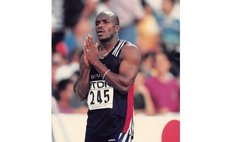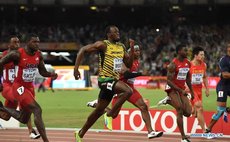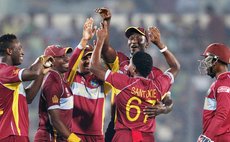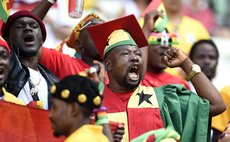Then and now with our cricket
My brief Sunday morning discussion with my longtime friend and sporting associate Henry Dyer centred on something rather disturbing psychologically in our cricket. Henry was relating his dismay at finding his visit to Botanic Gardens late on Saturday had revealed the match in progress had been at a highly advanced stage – the third innings was already in progress before stumps on what was actually the first day! In other words, he had been assured by Fitzroy Doctrove, whose grandson was playing, that first innings had already been decided and a result was imminent for very early on Sunday. Mr. Doctrove identifies as the swing bowling brother of Chaucer and Billy, the last named being the former elite international umpire. The match, blessed by beautiful weather, was facing compression and completion of its four innings in eight hours of play!
Dyer summed up the situation with a deep sigh as he lamented: "these are not our days! Certainly not!" The long gone days referred to by him came and spanned out in the late 1950's and the 1960's and early 1970's. He was specifically being nostalgic about the heyday of the Blackburn Sports Club which was prominent in cricket and football forty to fifty years ago before players migrated for economic reasons.
As a club, Blackburn was comprised of old boys of Dominica Grammar School and St. Mary's Academy who came on the scene determined to carry their sporting ardour into the national and regional leagues after it had been kindled by sundry sports masters. Blackburn experienced its first daunting reverse in its first match of its first season in the First Division when it was bowled out for 44 by Police at Windsor Park.
Playing surface of the time was the jute matting. As the matting carpet was deemed very batsman friendly, you can imagine the degrading scorn with which the Blackburn debut was greeted! As secretary of the club I took it upon myself to summon urgent discussions between Ossie Symes our president, Dyer, our captain, and other senior players to chart a useful way forward. I was not content to be a laughing stock. Immediate initiatives had to be the securing of suitable practice arrangements, and upon this rested, of course, ample fund raising efforts.
We obtained permission from the Roseau Town Council to develop a concrete batting strip in a corner of Windsor Park. The strip was the product of a couple of loads of stones carried from the beach at Jimmit using a borrowed two ton truck. The site was dug one Saturday afternoon in August followed by muscular enthusiasm of concrete mixing the following day.
The finished project afforded our club a few months of regular cricket practices during the closing phases of the football season – practices joyfully participated in also by leading players from other clubs. On the concrete strip we used cork balls supplied at a number of stores, prominent among which was that of Boysie Thomas situated on the corner where Jays Bookstore now stands.
A useful element in our cricket preparation was regular outings to country districts. Thus, when we were not engaged in football matches on a weekend we toured villages like Pointe Michel, Soufriere, Grand Bay, Bagatelle, Grand Fond, Castle Bruce, La Plaine, Londonderry, Vieille Case, St. Joseph, Salisbury and, of course, the second town Portsmouth. These were very pleasant social occasions. In fact, some of our players met their future wives incidental to the cricket.
Our season of 1961 was auspicious in that Eddison Joseph, known better as "Nosey" and Clem John registered centuries enabling us to declare at 266 for 2 at Windsor Park against Spartans who had been highly favoured with Irving Shillingford and other notables in their ranks.
An excellent by-product of our practicing heavily on the concrete strip was a strong confidence developed by our batsmen in facing up to the hostile pace of colleagues Arthur Nesty, Richie Hill and others. A celebrated encounter against Combermere saw Blackburn declaring on the Saturday afternoon at 345 for 3 fired by centuries from Clem John and Tony Phillips. It was that kind of performance which encouraged the feeling that the First Division should be expanded to three day matches as occurs in Barbados. We could start matches on Fridays and allow more serious batsmen to get in the habit of scoring centuries.
This is an important point. The structuring of purpose to bat towards arriving at three figures must be worked at assiduously. If this is taken religiously the tendency will be to reach individual scores of 40 and 50 and 60 rather than comparative scores of 10 and 15 and 20. Also, a higher proportion of sizable individual scores will register in batting positions from No. 6 down to No. 10. This is a sure way of maximizing team scores via the stamina to compile innings lasting four hours and more. Incidentally, when we started practicing on our concrete strip we apportioned half an hour each for our leading batsmen but most found that amount of time very tiring. It took quite a bit of dosages before all concerned became acclimatized to the improved work ethic.
My dear Henry it slipped me to mention that our club also played against the Prisons at their compound, with rather forceful memories evoked by their umpire! I am not sure whether Augustus Gregoire played in the team as Prison Officer. With a bit of prayer – accompanied by a lot of hard work, our cricket teams can recapture the lost habit of compiling scores reflecting a beautiful enjoyment of playing the game. The scores in the last weekend match under reference: Dominica Cricket Academy182 and 198, Marinor Blasters 88 and 146. The Academy won by 146 runs. Congratulations to them. However, they should not be satisfied until centuries can reflect regularly in their victories. This sort of individual scoreline must be carried over into regional cricket. That's where required recognition arises.




